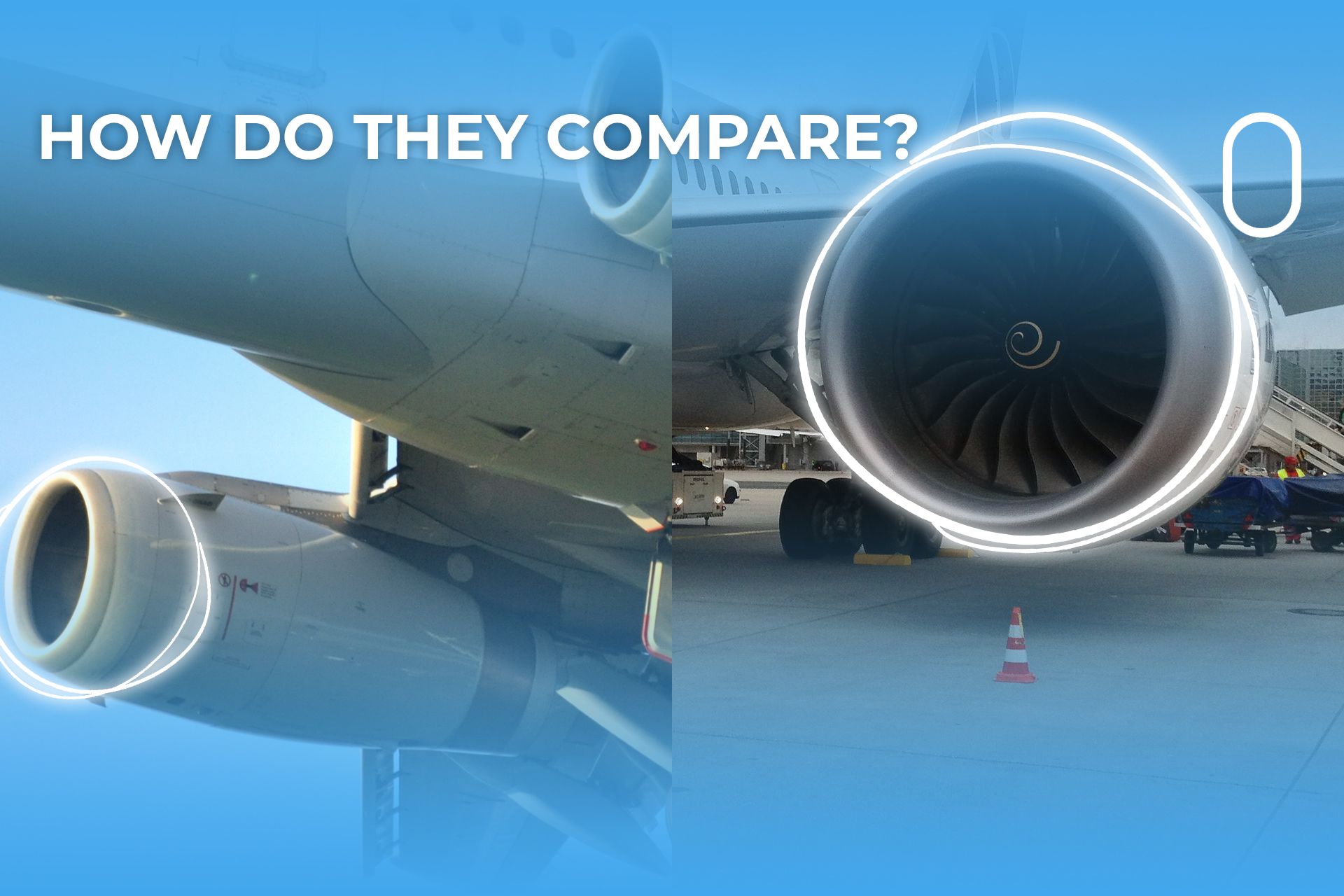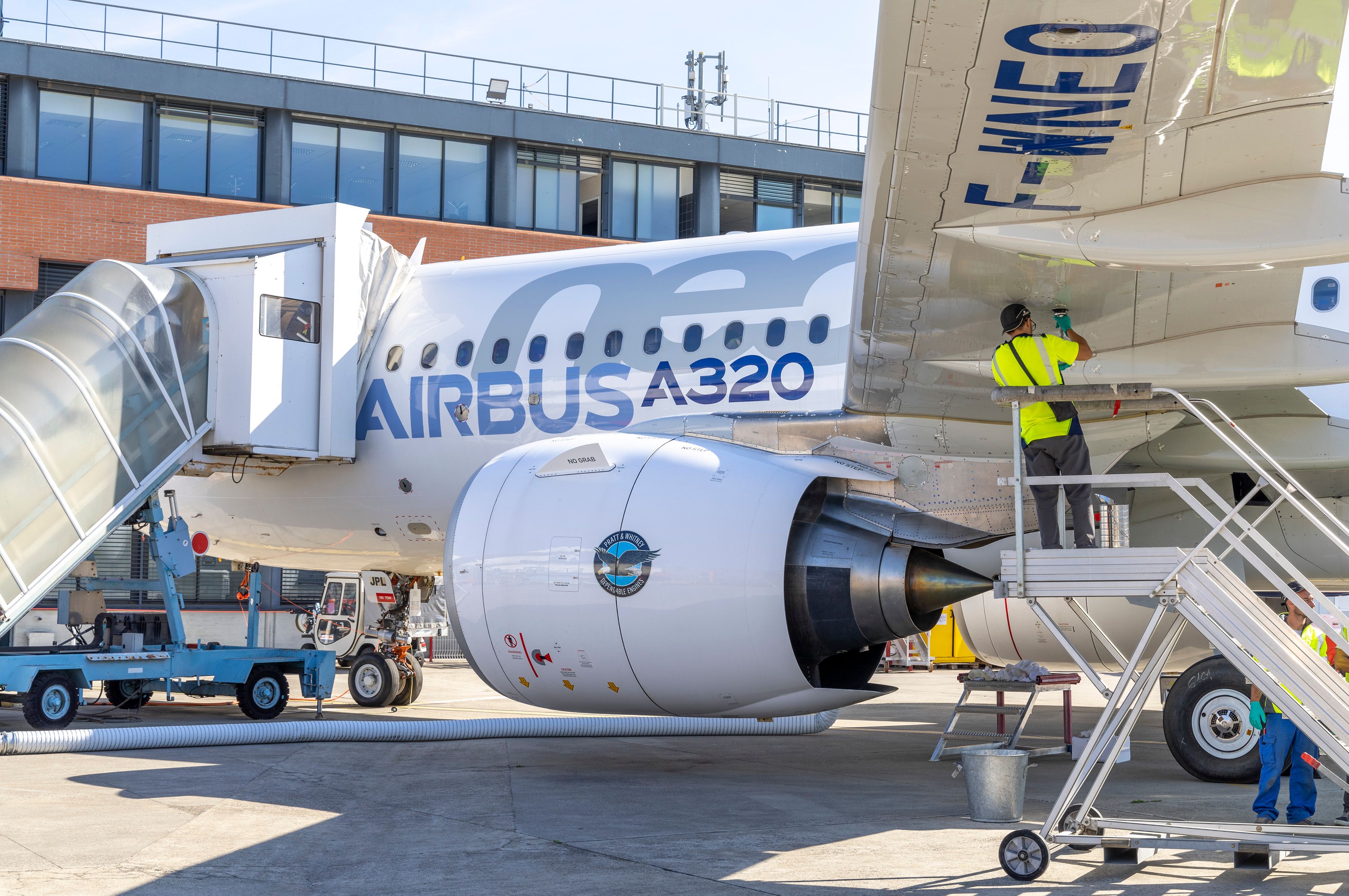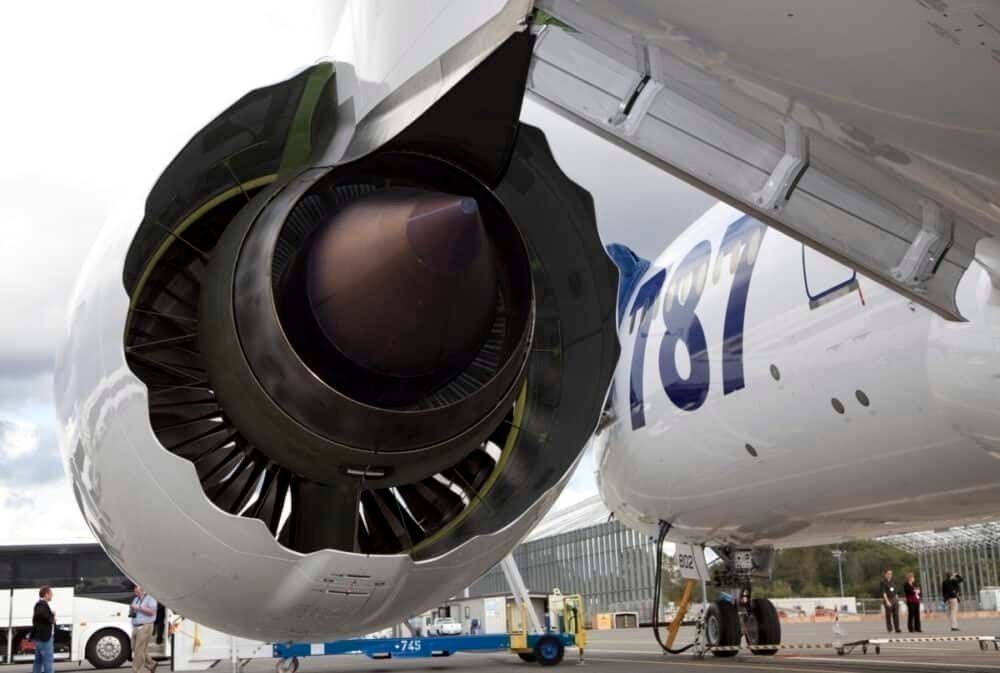Jet engines are designed to produce sufficient power to lift the aircraft off the ground and keep it airborne during flight. To achieve this, they must run at very high speeds. The speed of the engine, in revolutions per minute (RPM), is generally expressed as a percentage of the maximum allowed rotation speed. Smaller engines run at much greater speeds than larger engines.
Over the last few decades, the size of jet engines has significantly increased. The amount of thrust that an engine produces largely determines its operating efficiency. Large bypass ratio engines tend to increase the amount of thrust the engine produces. The bypass ratio is the ratio between the mass flow rate of the air bypassing the engine core (secondary flow) to the mass flow rate of the air entering the core (primary flow).
Photo: Airbus
Larger engines generate more thrust and are more efficient. However, must they be operated at faster speeds than smaller engines? The answer is no.
Blade tip speeds
Blade-tip speed determines the maximum pressure ratios the turbine and the compressor can obtain. This, in turn, limits the maximum power and efficiency that the engine can obtain. Engine manufacturers aim to achieve optimum blade tip speeds to increase efficiency. The blade tip speed increases as the size of the blades increases. If the diameter of a rotor is reduced by half, the rotational speed must double to keep the tip speed constant.
- GE90 powering the Boeing 777: 22 blades
- GEnx powering the Boeing 787 Dreamliner: 18 blades
- GE9X powering the Boeing 777X: 16 blades
Using composites has minimized the significantly optimized fan blade design and its weight. The number of blades required for newer engines is significantly lower than that for older engines. According to GE Aerospace,
“GE engineers further advanced the design of composite fan blades for the GEnx engine, allowing for a reduced number of blades per fan system (22 blades in the GE90 to 18 blades in the GEnx). The GEnx also utilized carbon fiber composites for the fan case to reduce the engine’s weight by close to 400 pounds.”
“The GE9X will have just 16 fan blades on its 134-inch front fan. The fewer, thinner blades will enhance the engine’s airflow and make for a lighter, more efficient fan that will help with the GE9X’s overall performance and fuel burn.”
The engine size
The smaller the engine, the higher the RPM required to achieve the optimum blade tip speed. For example, The CFM LEAP engine installed on the Airbus A320neo family (LEAP 1-A) and Boeing 737 MAX (LEAP 1-B) have N1 speeds approaching 4,600 RPM, and N2 speeds up to 20,500 RPM.
On the other hand, engine manufacturers must limit the blade tip speed on larger engines. Manufacturers aim to achieve tip speeds in or around the subsonic flow region. Subsonic flow around the tips minimizes engine noise while increasing fuel efficiency. However, fan blade tips reach supersonic speeds, such as take-off and climb, during high power points. According to Rolls-Royce,
“The Trent 900 is the fourth member of the Trent family and includes the latest technology proven to reduce noise and weight whilst increasing efficiency. For example, the engine’s 24 fan blades are to a new swept design that reduces the effect of shock waves as the tip of the fan rotates supersonically.”
Photo: Rolls-Royce
Therefore, maximum spool speeds on larger engines are lower than on smaller engines. For example, the General Electric GE90 that powers the Boeing 777 aircraft rotates at a top N1 speed of 2,850 RPM and N2 speed of 10,850 RPM. Similarly, the speeds of large three-spool engines are relatively lower than smaller engines. The three-spool Rolls-Royce Trent XWB engine powering the Airbus A350 has an N1 speed of 2,700 RPM, N2 speed of 8,200 RPM, and N3 speed of 12,500 RPM.
|
Typical two-spool engines |
Speeds |
|---|---|
|
N1 shaft |
2,200 – 4,500 RPM |
|
N2 shaft |
10,000 – 15,000 RPM |
|
N2 shaft (special-purpose engines) |
Up to 30,000 RPM |
Rolls-Royce lists that the front fan of the Trent XWB engine is just under 3 meters in diameter and sucks up to 1.3 tonnes of air every second during take-off. Similarly, high-pressure turbine blades in the engine’s core rotate at 12,500 RPM while the blade tips approach 1,900 km/h, nearly twice the speed of sound.
|
Typical three-spool engines |
Speeds |
|---|---|
|
N1 shaft |
2,200 – 4,500 RPM |
|
N2 shaft |
6,000 – 8,000 RPM |
|
N3 shaft |
10,000 – 15,000 RPM |



